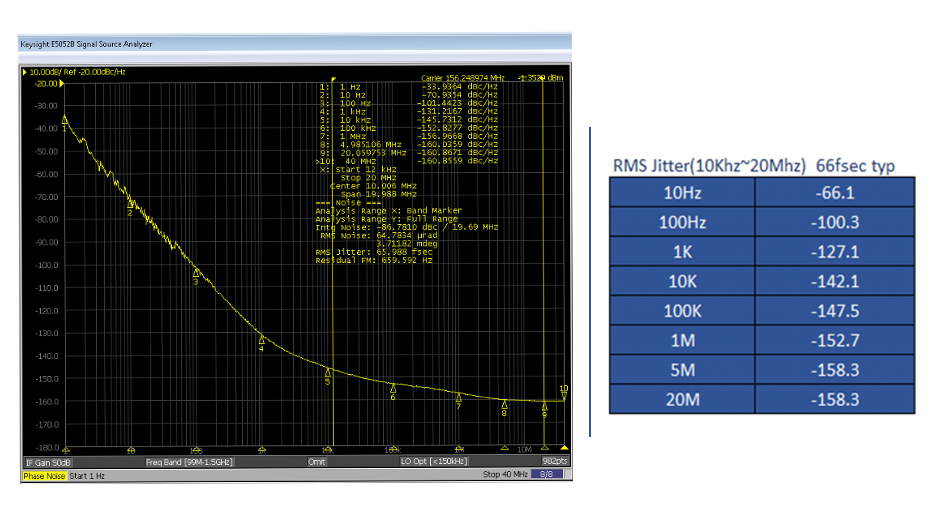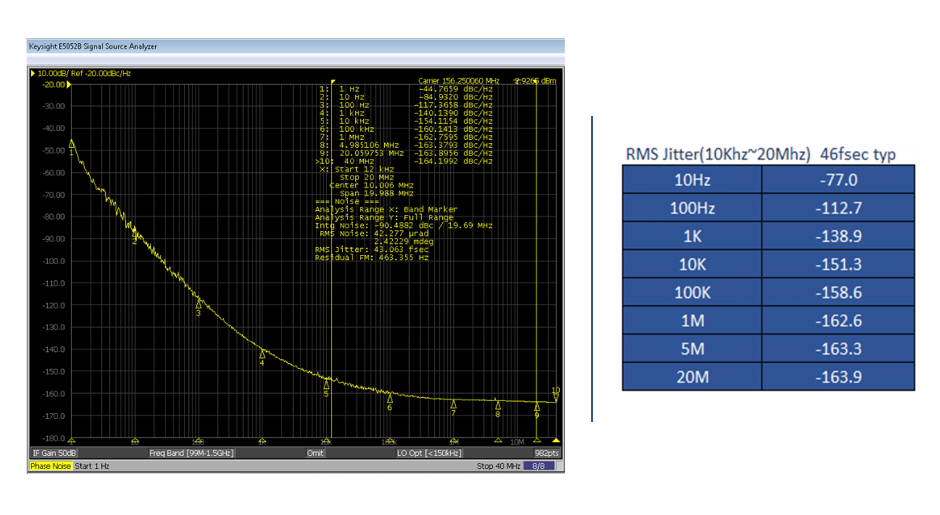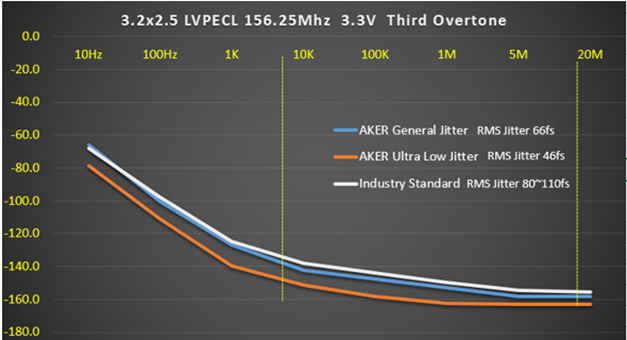In the realm of modern communication and signal processing, two pivotal concepts continually emerge: phase noise and phase jitter. These two interconnected characteristics are indicators of signal stability and quality, especially in high-frequency and high-performance applications. Let’s delve into a deeper understanding of what phase noise and phase jitter entail and why they matter in the world of technology and communications.
In signal processing, phase noise is the frequency domain representation of random fluctuations in the phase of a waveform, corresponding to time domain deviation from perfect periodicity (jitter). Phase noise is the instability of a frequency expressed in the frequency domain, while jitter is fluctuation of the signal waveform in the time domain.
Jitter can also be called time base error, which refers to the problem in the fields of electronics and telecommunications. The difference between the periodic signal and the true period is usually equivalent to the reference clock signal. Time base errors can affect the analog output of a digital-to-analog converter. In communication links (such as USB, FPGA, PCI-E, SATA, OC-48), especially during the restoration process of sampling signals, jitter is not expected to occur.
Improvements in current consumption and the waveform’s fluctuation help optimize differential oscillators and improve performance. In order to satisfy these needs, Aker has been focusing on the performance of the differential oscillator product RMS jitter. As the size of the quartz crystal inside the reference oscillator gets smaller, maintaining better RMS jitter capability becomes more challenging.
In response to the current demand for overall system size and functionality, designers are looking for a way to provide the best jitter performance of a small size. Such characteristics are widely used in network, optical module, optical transceiver, high-speed communication, computational storage and RF applications that require low power consumption and low jitter performance.
The RMS jitter curves of Aker’s 3.2×2.5 LVPECL 156.25 MHz 3.3 V third overtone products have been compared to industry standards, demonstrating Aker’s superior RMS jitter performance. The phase noise performance for the third overtone is remarkably stable (third overtone-mode crystals resonate at three times its fundamental frequency for faster and smoother data transmission).
Please refer to the graphical illustration below for further details.



| Aker Product | Frequency | Output | Supply Voltage | Max Curent Consumption | Typical Phase Jitter (12 k to 20 MHz) |
|---|---|---|---|---|---|
| S3A LVPECL | 156.25 MHz | LVPECL | 3.3 V | 50 mA | 46 fs |
| S3A LVDS | 156.25 MHz | LVDS | 3.3 V | 20 mA | 80 fs |
| S3A HCSL | 156.25 MHz | HCSL | 3.3 V | 30 mA | 80 fs |
| Aker Product | Description | Frequency | Application |
|---|---|---|---|
| S7A LVPECL | LVPECL 7.0x5.0 | 156.253 MHz | Ethernet Switches |
| S7A LVDS | LVDS 7.0x5.0 | 100.000 MHz; 125.000 MHz; 156.250 MHz | Ethernet Switches, HDMI |
| S3A LVDS | LVDS 3.2x2.5 | 100.000 MHz | Video Device |
| S7A HCSL | HCSL 7.0x5.0 | 100.000 MHz | Intel FPGA |
| S3A LVPECL | LVPECL 3.2x2.5 | 156.250 MHz | Intel FPGA, Ethernet |
| S2A LVPECL | LVPECL 2.5x2.0 | 125.000 MHz | Ethernet |